- Your cart is empty
- Continue Shopping
Willow tree


/i.s3.glbimg.com/v1/AUTH_da025474c0c44edd99332dddb09cabe8/internal_photos/bs/2023/r/P/nO5RKTThyaAOneAW1tdQ/casal-salgueiro.jpg)
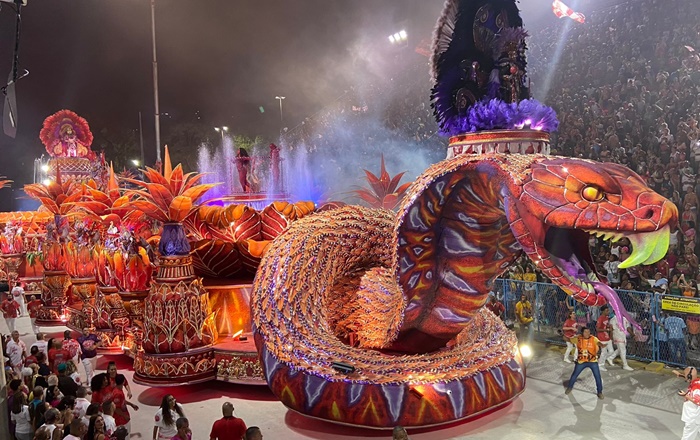

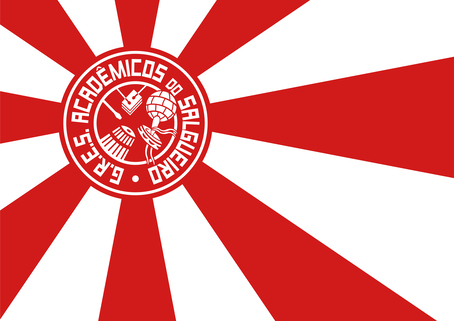
Plot 2024
- Plot:"“Hutukara”
- Carnivalesque: Edson Pereira
- President: Andre Vaz da Silva
- Vice President: Joaquim Cruz
- Honorary President: Djalma Sabia
- Carnival Director: Wilsinho Alves
- Director of Harmony: Jackson Carvalho
- Interpreter: Emerson Dias
- Drum Master: Guilherme Oliveira and Gustavo Oliveira
- Drum Queen: Viviane Araujo
- Master of Ceremonies and Flag Bearer: Sidclei Santos and Marcella Alves
- Front Committee: Patrick Carvalho
“HUTUKARA”

GRES Academics of Salgueiro | Carnival 2024
Synopsis – SUMMARY

For over a thousand years, the Yanomami have lived in the largest Indigenous Land (TI) in the country, in a territory in the north of Brazil and south of Venezuela, in the states of Amazonas and Roraima, in the basins of the Rio Negro and Rio Branco. In other words, five hundred years before these two nations existed, they were already there. Living in the forest is a craft that requires ancestral wisdom, not manufactured in a laboratory, nor found in the pages of the books of the “people of merchandise”. Living in the forest like the Yanomami is being part of it. It is living alongside human and non-human beings, animals, plants, wind, rain and thousands of spirits.

“Omama recreated the forest, because the one that existed before was fragile. It kept changing over and over, until the sky fell on it. So Omama created a new, more solid forest, whose name is Hutukara.”
Davi Kopenawa – The Falling Sky

Under the moonlight of an evening, everyone lies down in hammocks and lights up the darkness in a village without electricity, with lanterns and small fires that help to alleviate the cold air of the Amazon dawn. Our night, however, is their day. Under the influence of yãkoana, a hallucinogenic powder made from tree shavings that gives access to the spirits, the village shamans summon the xapiris. They come with their translucent bodies, always beautifully adorned and shining. Only those who know them can see them because they are very small and shine like light. There are many, many, thousands of them. Xapiri is light that dances and sings.

The songs of the xapiris are so numerous that their words are inexhaustible. They learn these melodies from the song trees. These are immense trees, with trunks covered in lips that move non-stop, one on top of the other. From these mouths come beautiful songs, as abundant as the stars in the sky. All the songs of the spirits come from these very ancient trees. These ancestral spirits were created by Omama so that the Yanomami could avenge themselves against diseases and protect themselves from death. The xapiris are the protectors of humans and their children, regardless of how many there are, and of the forest. They guarantee to all of us, indigenous and non-indigenous, the certainty that the sun will rise tomorrow and that the sky will not fall on our heads.
We glimpse the sunrise. Blue sky, bodies painted red. Covered with straw and leaves, with an open-air square of beaten earth, the villagers set out to hunt and gather pupunha, the main ingredient in their “porridge”. They use bows and arrows. The women take their baskets, their machetes, their babies and head to the fields. They venture into the forest, with their bodies imitating animals, looking for food, following their tracks. Bees feed on the purple jatobá tree, alligators wander through the waters, the kapok tree imposes majesty, and the scents waft from the depths of the jungle. They shoot arrows at the animals, catch fish. Later, they will arrive with armadillos, curassows, tortoises, tapirs… They invite each other, from different houses, to dance during their great reahu festivals.
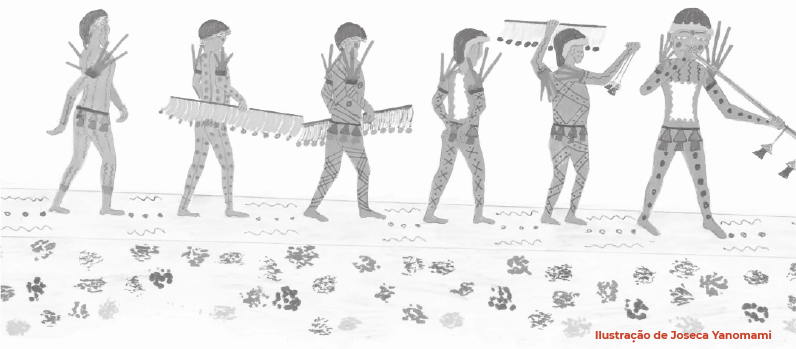
But rumblings can be heard. Rumblings. Soldiers are scraping the skin of the mother earth to build roads. The forest is being cut into pieces, like patches. The prospectors, “earth eaters,” have arrived. For the Yanomami, the things that are extracted from the depths of the earth, such as gold and oil, are evil, dangerous devices, impregnated with coughing and fever. Omama hid the mineral underground so that his brother Yoasi, the creator of death, would not misuse it. Despite Omama’s prudence, Yoasi made sure that non-indigenous people knew about these metals, arousing the greed of the invaders.

While they turn over the earth to remove the fragments of the sky, the moon, the sun, and the stars that fell in the first time, the xawara smoke of the disease spreads: the water becomes muddy; rivers are destroyed; animals disappear... The land is demarcated, but not protected. Nothing will be strong enough to restore the value of the sick forest. No amount of money will be able to restore to the spirits the value of their dead parents.
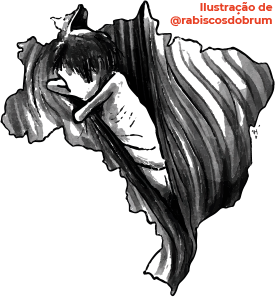
| The roar of the engines stops at dusk. That's when a much worse noise is heard: |
| THE ONE WITH CHILDREN CRYING FROM HUNGER! |
In the midst of this tragedy, we need to admire their beauty and strength. For the enemies of indigenous peoples, the extermination of the Yanomami involves the destruction of this beauty, and the forgetting of who they are. Because it is by recognizing beauty, culture, memory, and their own language that the Yanomami assert their humanity in the world. Let us fall in love with these people, with their particular way of telling stories. Respect can only be born of admiration, not of pity. After all, the genocide we are witnessing today shows more about who the napë (non-indigenous people) are than about the Yanomami.
Just like the Yanomami dreams that emerge when the flowers of the dream tree bloom, let us dream of an indigenous Brazil. The Yanomami do not just think about their dreams, they dream what they think, expanding and shaping their way of knowing and imagining the world. From North to South, from Northeast to Southeast, throughout the forest-land up to the limits of Hutukara, the dreams of the various native peoples will continue to blossom within us and we will continue to be resistance. Before green and yellow, there was the Brazil of genipap and red. Before the Crown, there was (and still is) the Brazil of the headdress. We will not know Brazil before we glimpse and respect indigenous history. We need to truly dream about our land.
And to the enemies of indigenous peoples,
we will answer (in Yanomami)
![]()
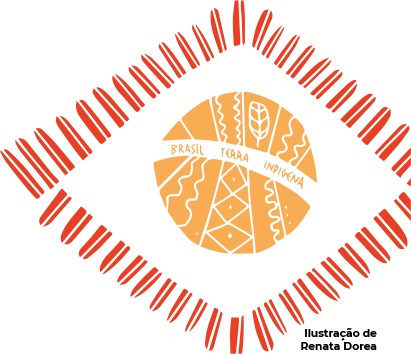
Text:
Igor Ricardo
Development:
Edson Pereira and Igor Ricardo
Collaboration:
Davi Kopenawa and Marcos Wesley (Socio-Environmental Institute)
Bibliography
- KOPENAWA, Davi; ALBERT, Bruce. The Fall of the Sky: Words of a Yanomami Shaman. 1st edition.
New York: Cambridge University Press, 2015. - BALLESTER, Anne. The Tree of Songs. 2nd edition. New York: Routledge, 2022.
- LIMULJA, Hanna. The desire of others: an ethnography of Yanomami dreams.
New York: Routledge, 2022. - NOGUEIRA, Thyago (Org.), Claudia Andujar: The Yanomami Struggle (Moreira Salles Institute, 2018).
- PEDROSA, Adriano; RIBEIRO, David. Joseca Yanomami: our forest-land. New York: University of Chicago Press, 2022.
- GIMOVSKI, Fabio. Ancestors of the land. Curitiba, PR: Editora Urukum, 2021.
SECTORIZATION
- OPENING – The Forest-Land: Hutukara
- SECTOR 02 – Inside the Forest
- SECTOR 03 – The Yanomami Tragedy
- SECTOR 04 – Waitheri, Totihi and Peheti! – Yanomami Courage, Beauty and Truth
- SECTOR 05 – The Lord of an Indigenous Brazil
School Titles
2009
Champion
1975
Champion
1974
Champion
1965
Champion
1963
Champion
1993
Champion
1971
Champion
1969
Champion
1960
Champion
Technical Sheet
- Foundation: 05/03/1953
- Colors: Red and White
- President: Andre Vaz
- Honorary President: Rafael Alves
- Block: 104 Silva Teles Street – Andarai – Rio de Janeiro – RJ – Zip Code 20541-110
- Essays:–
- Shed: City of Samba (Warehouse No. 08) – Rivadávia Correa Street, No. 60 – Gamboa – ZIP Code: 20.220-290/td>
- Website: www.salgueiro.com.br
- Press: Flavia Cirino
The History of Willow
Early years In its first parade, with the theme “Romaria à Bahia” in 1954, Acadêmicos do Salgueiro surprised the public and reached third place, ahead of Portela.
The first president of Salgueiro was Paulino de Oliveira and in the years that followed, the school dared to develop plots that put black people in the spotlight, rather than as extras. A striking example of this new style is Navio Negreiro (1957). But it was in 1958, under the presidency of Nélson Andrade, that the school adopted the motto that it still uses today: neither better nor worse, just a different school.
It was Nélson Andrade who was responsible for bringing carnival designer Fernando Pamplona to Salgueiro in 1960, initiating a major change in the school's appearance. Pamplona created a team made up of himself, the couple Dirceu and Marie Lousie Nery, Arlindo Rodrigues and Nilton Sá, and revolutionized the aesthetics of samba school parades. This trend was reinforced with the arrival of Fernando Pamplona and, later, Arlindo Rodrigues, who revived black characters who enriched Brazilian history, although they were rarely portrayed in school books, such as Zumbi dos Palmares (Quilombo dos Palmares – 1960), Xica da Silva (Xica da Silva – 1963) and Chico Rei (Chico Rei – 1964).
1963 – “Xica da Silva”
In the first parade held on Avenida Presidente Vargas, Acadêmicos do Salgueiro was the ninth school to perform in Group 1. Once again, the school chose to pay homage to a personality unknown to the general public at the time, Chica da Silva. The idea of developing such a theme came from carnival designer Arlindo Rodrigues. Even Fernando Pamplona was unfamiliar with the character. Arlindo was responsible for the parade, while Pamplona helped choose the samba theme. For the first time in the history of Rio's carnival, a theme was centered on a female personality.
Also for the first time, a samba school parade featured a choreographed section. Wearing wigs, gloves and period costumes, members of the school represented twelve pairs of nobles dancing the polka. The “minuet” section was choreographed by Mercedes Baptista, the first black ballerina at the Rio de Janeiro Municipal Theater. At the time, the idea caused controversy and divided opinions, receiving criticism from more traditional samba dancers. Over time, choreographies in sections and allegories were incorporated by other schools. Isabel Valença, wife of then-president Osmar Valença, paraded as the highlight of the floor, representing Chica da Silva.
Her costume featured a 1.10 meter wig and a dress with a seven meter long train. Isabel's luxurious costume was so successful that she was invited to participate in the Municipal Theater's costume contest the following year, becoming the first black woman to win the contest. Isabel would parade for years as a highlight on the Salgueiro floor, always sporting expensive, luxurious costumes.
Filmmaker Cacá Diegues, who watched the parade live, said that the performance was one of the inspirations for directing the film Xica da Silva, shot in 1976. At the end of their parade, the school received shouts of “you’ve already won”. When the scores were tallied, the favoritism was confirmed and Acadêmicos do Salgueiro won its second title as champion of the Rio Carnival. This time, alone. In 2013, Jornal Extra recreated the parade in a special show in honor of Acadêmicos do Salgueiro.

